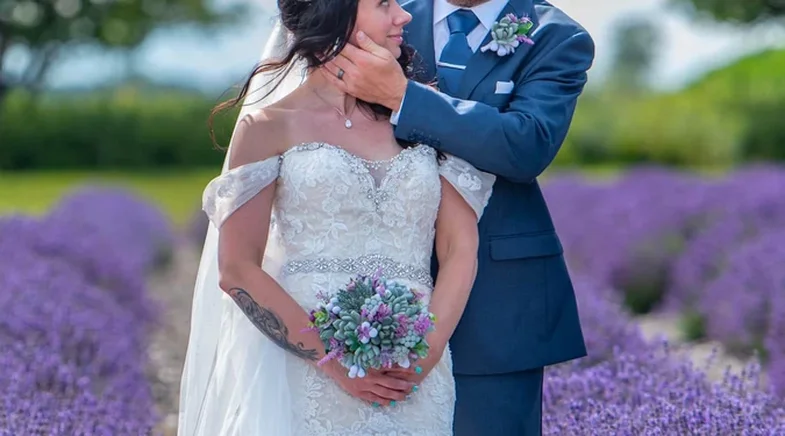Marriage is usually about love commitment and building a life together. But not all marriages look like the romantic relationships we see in movies or read about in books. A lavender marriage is one such example it is a marriage that serves a purpose other than romance. The more common “real marriage” is based on love and partnership. Let’s break down what sets them apart and why the conversation matters today.
What is a lavender marriage?
The term lavender marriage describes a union designed to conceal one or both partners’ true sexual orientation. These arrangements were common in eras or societies where being LGBTQ meant risking reputational damage loss of career religious condemnation or worse. Often celebrities businessmen or political figures entered such marriages. Both partners might agree to the arrangement to present a socially acceptable image while maintaining private lives apart from public scrutiny.
In a lavender marriage partners might go through the motions of public life having children or appearing affectionate in front of others. But deep emotional intimacy sexual compatibility and mutual vulnerability are usually missing. It functions more like a contract or partnership based on social convenience.
Why do lavender marriages exist?
To answer that question we need to understand past social norms and legal pressures. In many countries until recently homosexuality was illegal. Even where it was legal discrimination remained. Public figures especially faced scrutiny and risk losing their careers or being shamed.
By marrying someone of the opposite sex openly they gain social protection and stability. They had a public story that fit the expectations of family office or society. For some this meant maintaining steady careers and avoiding harsh consequences even if it burdens their emotional well-being.
How is a real marriage different?
A real marriage is built around emotional connection shared values and life together. It is more than social cover. A real marriage includes romantic love physical closeness and mutual understanding. Couples talk about feelings share passions support each other in hard times and make dreams come true together.
Communication in a real marriage is open and honest. Both partners share joys fears and frustrations. When conflict arises they work on it together. Intimacy is valued in both the emotional and physical sense.

How do they feel from the inside?
Inside a lavender marriage partners may feel trapped performing a role. They must maintain appearance while hiding their truth. Private loneliness guilt anxiety and fear of being found out are common. Partners may rely on outside relationships for genuine emotional or sexual intimacy which adds layers of secrecy.
In a real marriage there is space for vulnerability acceptance and growth together. Partners lean on each other emotionally and physically. They feel secure and accepted for who they are and know their spouse cares. Even when times are tough connection remains.
What are the challenges of each?
Lavender marriages present unique struggles. Maintaining secrecy is stressful. Therapy or closeness becomes difficult. There can be resentment guilt or resentment over what is hidden or denied. If children are involved the impact on them can be complicated emotionally.
Real marriages have their own set of challenges too. Lovers grow and change. Misunderstandings happen. Financial stress or parenting differences arise. But the foundation of trust and love makes working through these issues possible. Couples can seek counseling and rebuild broken bonds.
When did lavender marriage become common?
Lavender marriages became more visible in early and mid 20th century Hollywood. Actors who were closeted feared they could miss roles or be blacklisted. Business leaders politicians and other public figures followed this practice to avoid ruin. Private allies within circles sometimes acknowledged the arrangement while public eyes remained fooled. Over time social progress made many feel these arrangements are less necessary though they still exist in places where LGBTQ acceptance remains risky.
Is a lavender marriage still used today?
Yes in some cases. In places where LGBTQ rights are limited individuals may still enter arrangements to avoid persecution or maintain safety. Some use it to protect careers or family status even while living separate personal lives. While society is more accepting in some parts of the world old pressures remain strong. So lavender marriage is not just historical it still has relevance today.
Also Read: Why Cheating Is a Choice Not a Mistake and What It Means for You
How do people in lavender marriages cope?
Some partners support each other’s truths privately sharing affection within carefully guarded boundaries. They establish rules for privacy separation and emotional boundaries. Some seek therapy to deal with shame or stress. Those who cannot stand the arrangement may eventually choose to live openly or separate. In any case coping often involves navigating multiple identities navigating public and private personas and dealing with the emotional toll of hidden truths.
Using Digital Infidelity Investigators to Spot a Fake Marriage
In some cases, a lavender marriage is carefully constructed to appear genuine while hiding important truths from one or both partners. Digital infidelity investigators such as Cyberhacks can play a major role in uncovering evidence that suggests the relationship is not based on romantic or emotional intimacy.
By analyzing communication patterns, dating app activity, hidden accounts, and even deleted messages, these professionals can help determine if a partner is living a double life. If someone is secretly pursuing same-sex relationships or maintaining a marriage purely for social appearance, digital forensics can reveal what is often hidden from plain sight.
Are there signs your marriage might be a lavender marriage?
If your relationship lacks intimacy but keeps up appearances are you just busy or is something deeper missing? If you suspect you married someone who feels distant or avoidant of emotional or physical closeness ask questions gently. Look out for avoidance living separately or secretive behavior. There could also be no wrongdoing at all as people express love differently or go through phases. If you care and feel uncertain try talking about feelings and expectations without judgment.
Can a lavender marriage become a real marriage?
It is possible when partners decide to shift from hiding to opening up. That might mean talking about true identities beginning divorce or transitioning into relationships that reflect their sexual orientation. Sometimes lavender marriages evolve into deep friendships or business partnerships if romantic bond is not possible. The change depends on trust honesty and willingness to step into the vulnerability of truth.
What does this mean for you?
Learning about lavender marriage can help you recognize different forms marriage can take. If your own marriage feels disconnected consider what shape it takes. Are you living a shared real life or is the relationship keeping secrets under the surface? Self reflection and honest conversations can help. If answers are hard to find talking to a trusted friend professional counselor or a therapist can offer clarity.
Understanding the contrast between lavender and real marriage helps you appreciate the importance of emotional authenticity communication and love. It also shows that safe marriages are possible only when truth is at their core.
Relationships are complicated even when they seem ordinary. If you are in an arrangement that hides your truth or feel any part of your relationship is built on a lie start small. Reach out for help take time to understand your feelings and consider creating a connection built on honesty and mutual respect. Everyone deserves the kind of partnership that makes them feel seen heard and truly loved.

